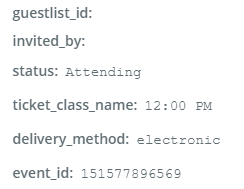Hi Zapier Community,
Seasoned pro here with Zapier, however we have come across a problem with the Eventbrite ‘New Order’ trigger doubling up on data when populating Actions.
To recap, we are capturing data when a ‘New Order’ is received in Eventbrite. The data looks fine on initial testing, however when we go to populate an ActiveCampaign event with actions, the trigger data is doubled up when it populates the field. (eg; phone numbers are listed twice, date fields listed twice, etc etc)
I tried using the format option to remove the double up, but because it’s technically not in source data it doesn’t do anything.
Is this an error in the setup or potentially something Eventbrite need to address?










